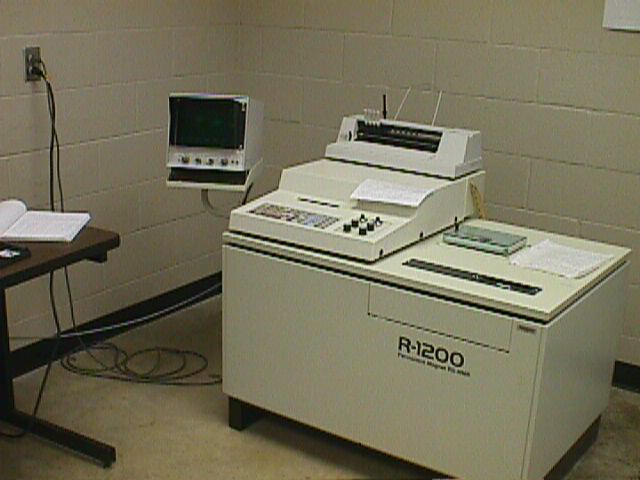|
Inorganic Chemistry |
Experiment 7 |
Spring 2016 |
Preparation of CpRu(PPh3)2Cl
This experiment will involve the synthesis of an air-stable compound, CpRu(PPh3)2Cl.
The difficulty in the preparation is the fact that the intermediate in the
reaction is air sensitive. To prepare this compound, students will use Schlenk line techniques. Once prepared, the orange
product is to be characterized by 1H NMR, visible and IR
spectroscopy. This experiment is modified from M. I. Bruce and N. J. Windsor, Aust.
J. Chem., 30, 1977, 1601 - 4.
1) Find the MSDS for the compounds used to make CpRu(PPh3)2Cl. The starting reagents are dicyclopentadiene, ruthenium trichloride (ruthenium(III) chloride) and triphenylphosphine.
2)
Cracking the Cp dimer
The first step in the synthesis of CpRu(PPh3)2Cl is to crack the dicyclopentadiene dimer. This is achieved by using the fractional distillation set up shown in the photo. The dicyclopentadiene dimer (C10H12) is broken down (cracked) to the monomer C5H6 (Cp). This occurs at elevated temperatures. The column head temperature will read approx. 40oC when the cracked Cp comes over. Collect approximately 5 mL and discard. Collect 12 - 15 mL of Cp to be used in the reaction. Do not allow the Cp dimer to froth up into the Vigreaux column. The freshly cracked Cp must be used within a week, as it slowly dimerizes even at lower temperatures. If you are not able to do both reactions in the same day, place the Cp in the explosion proof refrigerator in LSE534.
3) Preparation of CpRu(PPh3)2Cl
While the Cp is
being cracked, into a 250 mL two-neck flask, dissolve 2.1 g of PPh3 in
50 mL of ethanol and place under N2. Bring the solution to
reflux. While the solution is warming to reflux, dissolve 0.5 g of RuCl3
xH2O in 37.5 mL of ethanol. When the solution reaches
reflux, add simultaneously the RuCl3 solution and the cracked
Cp. Bring the solution back to reflux and reflux until the solution turns
orange and an orange precipitate forms. Let reflux for another 30 min
before turning off the heat. Let cool to room temperature and place the
flask, with stoppers, in the explosion proof refrigerator on LSE534. The
product must be filtered, washed with ethanol and dried before
characterization. Be sure to obtain your yield. The reaction flask
must be cleaned before the next group is scheduled to do their experiment.
4) Characterization of CpRu(PPh3)2Cl
You are to run the 1H NMR, visible spectrum and IR of your product.
5) Cost analysis
The report must include a cost analysis of all materials needed to do the synthesis. You will start with a lab that has two hoods, working gas, water and air jets, and plenty of bench and drawer space. Everything else you must purchase.
Write up
Each person in the group must submit a separate
report. The report should include an introduction explaining how each
instrument works (in theory) and what information each instrument gives about
the compound. The experimental section will outline the procedure used to
crack the Cp dimer and the procedure for the
preparation of the CpRu(PPh3)2Cl. You must detail how
the compound(s) will be synthesized, including diagram(s) for the synthetic apparatus(i) needed for your experiment. The report
must include a schematic of the reactions. This schematic must be drawn
using computer software of your choice. Students should also include the
manufacturer for the NMR, UV/ visible spectrophotometer and IR
spectrophotometer. Include the NMR, visible and IR spectra. Discuss
the spectral assignments in the NMR, visible and IR spectra of your
compound. Attach the MSDS for each compound. Include the cost analysis.
This lab will be worth 60 points and is due by 5:00 pm Friday, Apr. 22, 2016.
.
